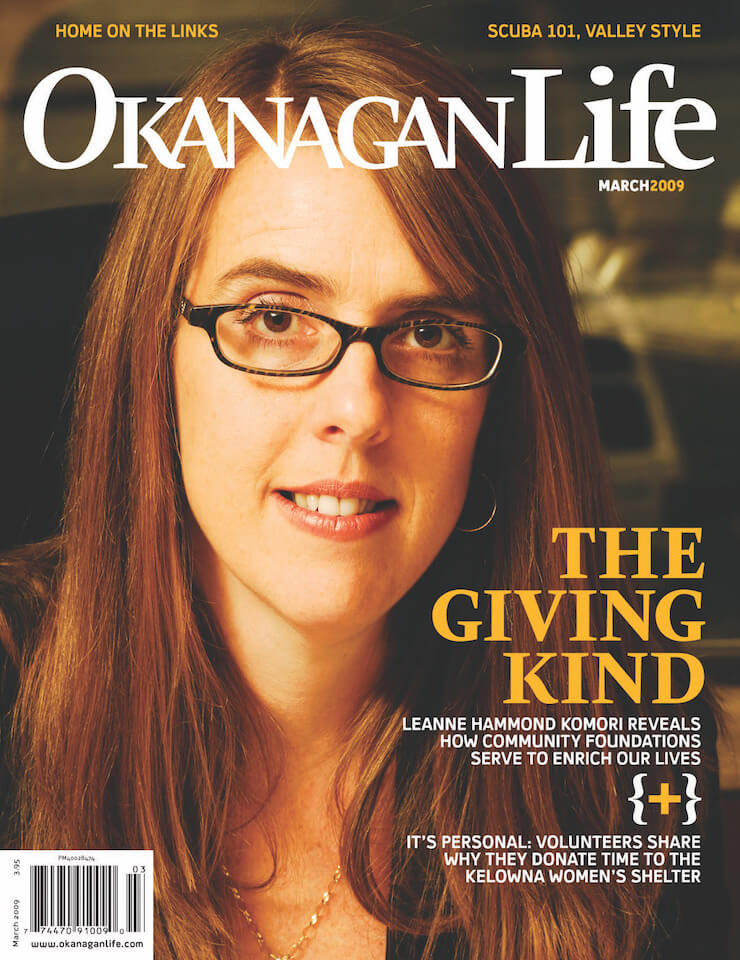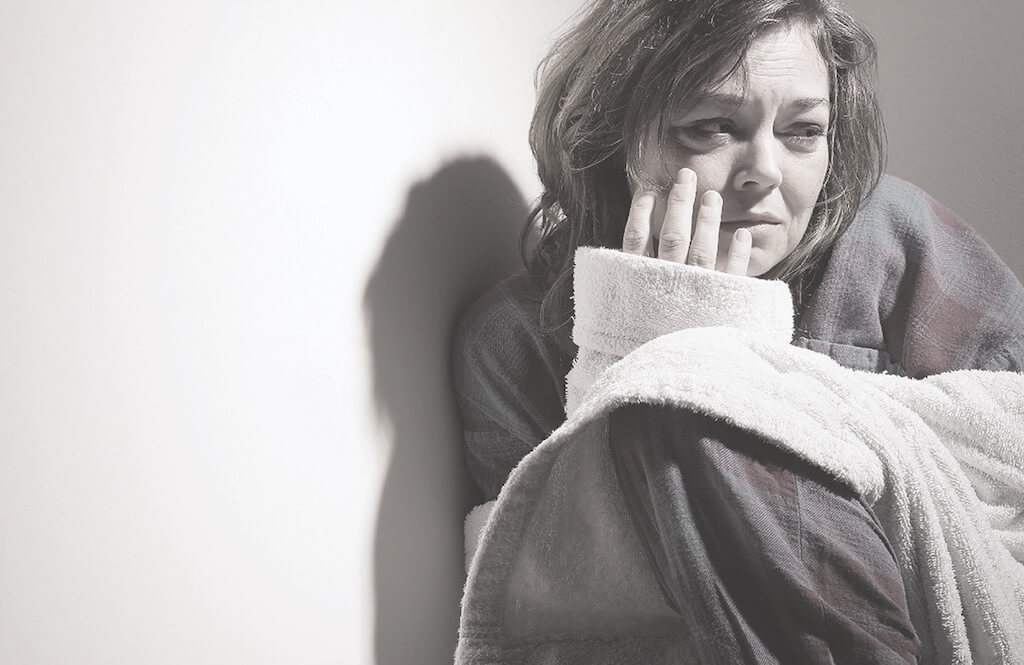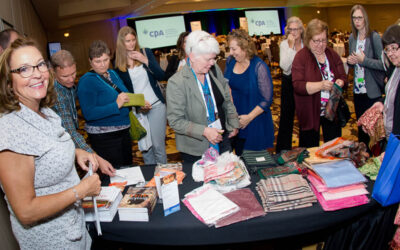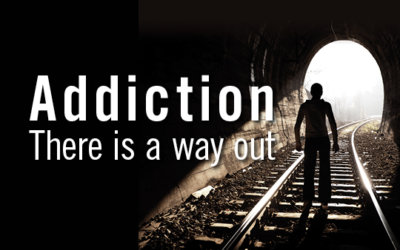There is no typical profile of an abused woman or an abuser. They come from all walks of life.

by Anne-Rachelle McHugh

When women make the hard choice to leave their abusive partners, they need a safe place to escape. In the Okanagan, heroes like the Kelowna Women’s Shelter volunteers work to provide them with stable new beginnings.
She put up with it for five years.
The threats, the put-downs, the isolation — both social and financial. But when he threatened her son, the she-bear in Pamela Nelson took over.
“Shut him up or I’ll shut him up for good,” her husband screamed.
His tone was different this time; more statement of fact than threat. Within milliseconds Pamela was sprinting wildly towards her son’s door; her husband just a hair behind. He was crazed, but she was adrenaline-fuelled. She reached the nursery first, slammed the door and barricaded herself in. Eventually — when her heart descended from her throat — Pamela summoned the courage to open the door just a crack. He was gone; off to a friend’s to cool down.
Pamela had been a baby bride; married at 18 in a wilful act of rebellion. There was no shotgun and no baby, just two immature individuals locked in an explosive battle of wills that turned violent.
“When things got bad I was not about to admit that I was in over my head and needed help,” she says. “This was the bed I’d made and I figured I had to lie in it.”
While Pamela says her ex-husband is a different person today, back then, he made her endure financial, physical and verbal abuse that increased when the couple moved from Kelowna to Alberta. There she found herself isolated and without support.
He was a yeller who would twist her arm behind her back or put her in a headlock in order to get his way. He was reckless with money and the further in debt he put them, the fewer options Pamela felt she had. She remembers the day her ex-husband parked his new Pontiac Fiero proudly beside the two cars they had yet to pay off. She was pregnant and the car had only two seats.
“How can I leave when I owe all this money,” she remembers thinking. “He was controlling the money, so he was making all the decisions. But it was me who decided to get married at 18.”
When their son was born, things became worse. Pamela’s ex-husband became more controlling and she began to find strength. Or perhaps it was the reverse?
“I knew I wasn’t a happy person but I didn’t see a way out. It wasn’t until he began to control how I could be a mother that the she-bear came out and I got to a point where I was standing up for my son and standing up for myself through him.”
Nowhere to Run
It was the 1980s; a time when spousal abuse was misunderstood and shelters were in their infancy. Awareness about the prevalence and devastating effects of spousal abuse was growing at a snail’s pace. If there was a shelter to run to, Pamela knew nothing about it. Instead, she drove to her sister’s where she slept and her presence was tolerated. The question unsaid, at least publicly, was what had she done wrong?
Pamela says reaching out was like admitting failure. “The first time you ask for help is hard. It gets easier after that.”
Friends and colleagues were suspicious. Why hadn’t she told them about the abuse before? Where were the bruises and broken bones? She grew tired of continually having to justify herself; tired of having to retell her story.
“I felt like I was doing the right thing, that I was doing what I needed for my son and me to survive, but I also felt like I was 100 per cent on my own and that everyone was judging me,” she says. “My world was becoming smaller and smaller and people were asking me to tell my story and to explain and to justify why I felt I needed to leave the marriage to survive. It just took too much energy.”
Today, two decades later, Pamela is remarried and a successful businesswoman with an MBA and her own company, Carey Management. She appears to be everything the stereotypical abused woman is not — articulate, assured and assertive. What she is not is completely honest. Today, none of her friends know about the abuse she suffered or the bankruptcy her flight forced her into.
“Why am I afraid of the perception that’s attached to having been an abused woman,” she asks rhetorically, “and why is that perception attached? That’s what’s wrong and that’s what needs to change.”
Volunteers Essential
Pamela is one of 50-plus volunteers whose time, energy and expertise helps keep the Kelowna Women’s Shelter afloat. Her most recent contribution is a professional presentation staff will use to raise awareness and funds. As many as half of the shelter’s volunteers are women who have experienced abuse. Many work in the shelter’s Lawrence Street thrift store, the office or at special events.
“I get so many people coming up to me at community events saying they could have used the shelter’s services years ago,” says Avril Paice, community awareness and events inside/out program coordinator. They want to know how they can help. “There is definitely a draw for people to come back and help other women. They feel like they’ve moved beyond it and have a lot of sympathy for the women who are in the immediate crisis.”
For some, volunteer training helps to confirm what they suspected but never acknowledged. “Some people don’t realize they have a history of abuse,” says Avril. “But they’ll say, ‘My dad was really mean to my mom or my husband’s a drinker and he calls me names, but he wasn’t abusive.’ They just don’t realize that these are forms of abuse.”
Not all volunteers interact with shelter clients, in fact, most don’t. Many are like Nicky Love, a professional painter who painted the adjacent transition house and will soon liven the shelter walls as part of a bedroom renovation project.
Nicky calls the experience of painting alongside her 17-year-old daughter transformational. “We talked about things I never thought we’d talk about. We talked about the women’s shelter and relationships, and it helped me explain to her that there are a lot of bad men out there, unfortunately,” she says.
“I don’t even know how to describe it. It just did so much for my daughter and me in terms of our relationship. You start out doing something for somebody else and it ends up really being for you. I think it helped me more than it helped them actually.”
Nicky answered many of her daughter’s questions: Why do women stay in abusive relationships? Why do they return? But the question that wasn’t asked — or answered — was why Nicky stayed. That question simply hung in the air.
“I have really low self esteem and figured that if something bad was happening it was probably my fault; that I probably did something to cause it,” Nicky says. “I didn’t want to say anything bad about their dad. What good would it do? I never wanted the kids to know why I left.”
It’s unlikely Nicky’s daughters are as oblivious as she’d like to believe; unlikely they are unaffected or immune to the cruel cycle of abuse that sees girls with abusive fathers often partner with similarly abusive men.
“My own mom went through the same thing and I think it’s true that you try to find someone that’s like your dad, unfortunately,” Nicky says.
She and Pamela are full of “do-as-I say, not-as-I-did” advice, full of empathy and understanding for women who have yet to summon the courage to leave.
“No one deserves abuse,” they both assert with newfound confidence. Yet, their actions drown out their words. Virtually no one knows what these strong, successful businesswomen have endured.
“Even now I wonder if I should have stayed another five years until the kids were out of school,” says Nicky. “I still ask myself what I did or said that made him so angry with me. What was it in me that made him treat me that way?”
That tendency to see the potential in others but not in themselves; to help set boundaries they were unable to maintain and to talk about the issue of abuse, but not about their own experience, is what keeps women locked in a cycle of blame and shame. A cycle that keeps society falsely secure in a misguided belief that abuse — physical, emotional, sexual or verbal — happens to “other women.”
“The public has this stereotype of the kind of person that is abused and that creates a false sense of safety; a sense that it won’t happen to them,” says Central Okanagan Emergency Shelter Society finance manager, Mary Chamberlain. “There is no typical profile of an abused woman or an abuser. They come from all walks of life.”
Spousal abuse is prevalent across Canada, where one in four women will experience violence at the hands of her intimate partner. Last year, nearly 100,000 women and children found safety, housing and support at the more than 400 shelters located throughout the country. And although shelters were initially thought to be temporary, the need continues to grow.
In Kelowna alone, the shelter took in more women and children in 2008 than in any year since it opened in 1980. Almost 300 women and 165 children stayed a combined 5,264 days last year. Staff fielded more than 2,100 crisis calls, up 11 per cent from the previous year.
Home Shouldn’t Hurt
The shelter is surprisingly quiet on the day I am buzzed into a house that looks no different than any other on the tranquil suburban street. Inside, it is split in two; one part used for counselling and paperwork, the other housing up to 22 women and their children.
The residence, where the women live communally, is peaceful. In the kitchen, chicken is defrosting on the counter and a woman talks on the phone. A baby plays near her feet while a toddler sits tucked into an easy chair in the next room, his eyes glued to the television screen.
Children like these are often silent witnesses to abuse that may be all they have ever known. Their stay at the shelter could mark the beginning of a new life, or simply provide temporary refuge and a chance to add a few pleasant memories to a library of bad ones.
Esther Almond is a volunteer who spends one afternoon a week in the shelter’s childcare centre, where her job is to shower the children with love and attention. She says she was drawn to the work, not by a personal history of abuse, but by a passion for children and teaching.
“The way I view it is, it’s about the now. So while we’re together we share a beautiful afternoon, read stories, watch finger plays, get some exercise, get dressed up, have a snack and a nice visit,” says Esther. “You always hope that they’ll be safe (when they leave) and that the little bit you gave them helps brighten their childhood.”
Training is especially important for such volunteers.
“Our kids have out-of-the-ordinary experiences so they might say something about their family that a volunteer wouldn’t expect and might not be prepared to respond to if they hadn’t gone through orientation and training,” says Avril. “We can’t just have a couple of teenage girls come down and look after the kids because it’s not safe for them and it’s not safe for the kids.”
Helping volunteers and donors feel connected to the women they help is an essential but challenging aspect of Avril’s work. She says staff must search for safe ways to help donors see how their contribution has helped without revealing confidential information that could put clients’ lives at risk.
She explains that letting donors know how they’ve helped is appropriate. Letting them know who they’ve helped or watching them open their Christmas gifts is not. “It’s frustrating. Some donors choose to go with organizations that will allow them to have more face-to-face contact with clients and we understand that.”
However, Avril points out that “some of these women are here under great secrecy and while we want them to receive donations and we want them to receive opportunities, we cannot release (private) information because in the wrong hands it could be deadly.”
She understands how the shelter’s extreme need for privacy and confidentially piques people’s interest. People are curious about what goes on behind closed doors.
Avril says, “I really try to educate people because that interest is a genuine curiosity and it’s not necessarily a negative thing. Some people are really surprised by how much domestic violence goes on because they don’t see it or it hasn’t impacted them as much. Men in particular are really driven by this. There are a lot of good guys out there who can’t believe that there is still a need for a women’s shelter.”
Reaching Out
People are often reluctant to get involved and critical when a woman returns to an abusive relationship. They see going back to such a partner as a sign of failure rather than the slow and steady progress it may be.
“Leaving isn’t about one big seismic shift where she decides she’s done and the relationship is over. It takes leaving many, many times, and each time they learn something,” says Avril. “We don’t know what might have happened if she didn’t leave those other times. It may not have been permanent, but that action may have saved the woman’s life or her children’s.”
Pamela recommends people reserve judgment and be ready to help when the time comes.
“It’s not a one-day fix. It’s more like being on suicide watch,” she says. “Let her know you’d be happy to have a cup of tea with her or offer to pick up her kids and take them to a movie so she can see what normal is. She has to learn and accept what normal is so she can come to her own conclusion. And she has to feel confident that there are people she can go to when she needs help.”
Why does she stay?
Women have a forgiving nature and a deep desire to keep their family together. They are often torn, wanting the abuse to stop but wanting the relationship to continue. A woman may stay in an abusive relationship because:
She loves her abuser and hopes he will change
She believes her children need a father
She has no way to support herself
She feels ashamed
She is isolated and has no support
She fears for her life
She has no transportation
Read more of the original stories celebrated in our 30th-anniversary issue.
In person with Linda Edgecombe
For Linda Edgecombe it’s one scarf, one book, one girl
Think B4 U text, says UBC research
Study evaluates texting as a poor way to deliver criticism Many think they’re doing a favour by texting criticism instead of giving it in person. Not so, say researchers at UBC Okanagan’s campus who have determined that negative comments can have the same impact...
10 days of wine at Sun Peaks Winter Okanagan Wine Festival
The Okanagan Wine Festivals Society and Sun Peaks Resort will host the Winter Okanagan Wine Festival this coming January. Now in its 21st year, the festival will run from January 11 to 20, 2019.. This celebration of fine wine and local cuisine is complemented by one...
TEDxKelowna 2018 hosts world-class speakers
André Picard, Dr. Nathan Pelletier, and Andre Boysen join the 2018 line-up From ‘Canada’s best columnist’ winner to renowned researcher, TEDxKelowna speakers on October 5 promise to live up to TED’s vision of ideas worth sharing. The event begins at 12:30 at the Mary...
Whites: Best of BC Wine Awards 2018
Let’s celebrate the wines from our fourth annual Okanagan Life Best of BC Wine Awards, this year held at the Delta Hotels Grand Okanagan. Our judging panel was a select group of independent, experienced wine judges from the trade, restaurant and education...
In the kitchen with Kristina Klein at EATology
At the bus stop Young Vernon chef serves up the science of eating fresh food It started out as a side thing, but then it just took off, says Kristina Klein, founder of EATology, an unusual bus depot diner in Vernon. It’s modern, but funky, with wooden floors instead...









0 Comments